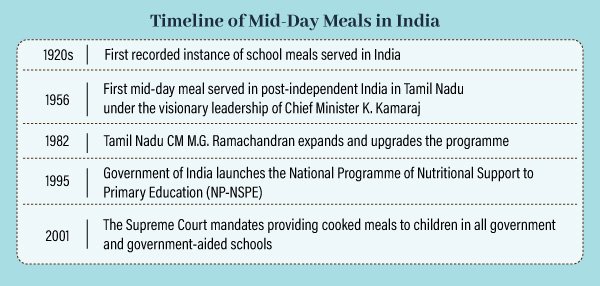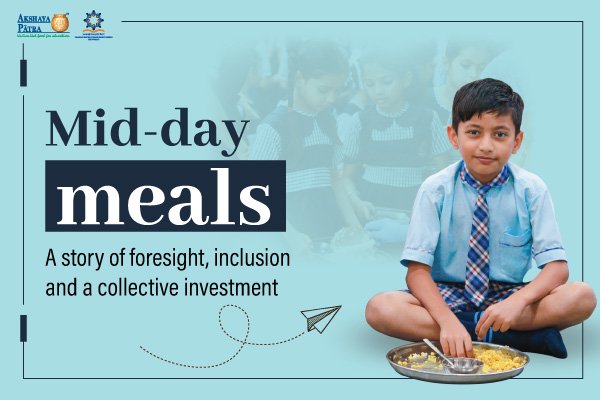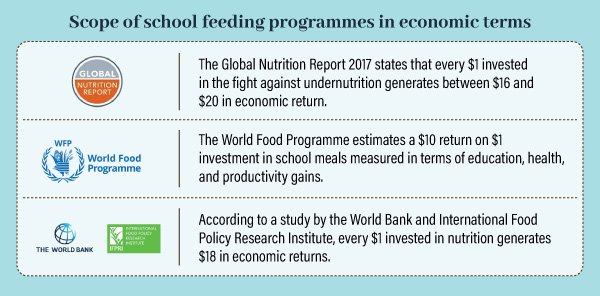The Journey of Mid-Day Meals in India
School lunches, more popular as mid-day meals or MDM in India, have a crucial role to play in ensuring children's well-being and fostering better learning environments. It is an intervention born out of the realisation that a well-nourished child is better equipped to reap the benefits of education. That explains the wide recognition for School Feeding Programmes (SFPs) or School Nutrition Programmes (SNPs) as a fundamental pillar of child welfare.
What might have started as a localised effort to address hunger among school children has now become a strategic intervention with high economic returns—an investment in the children, and consequently, in our common future and global stability.
The first recorded instance of school meals being served in the world dates back to 1790 in Munich, Germany, when Benjamin Thompson (a.k.a. Count Rumford), an American-born physicist, introduced meals for children attending school as a part of his welfare reforms to help the people from economically weaker sections of the society.
In India, the first instance of serving school meals can be traced back to mid 1920s, when the Madras Corporation Council began providing meals to students of the Corporation School at Thousand Lights in the city of Madras (now Chennai). The French administration initiated a similar programme in Puducherry in 1930s.

In post-independent India, several states, including Tamil Nadu, Gujarat, Kerala and Odisha, launched their own versions of school meal programmes. Among these, the most remarkable was the Mid-Day Meal Programme adopted by Tamil Nadu, under the visionary leadership of Chief Minister K. Kamaraj, to improve enrolment and attendance in schools. As a part of this initiative, the first mid-day meal was served in Ettayapuram in Tirunelveli District on 17 July 1956. Later, in 1982, M.G. Ramachandran expanded and upgraded it into a Nutritious Meal Programme to combat widespread malnutrition.
On 15 August, 1995, the Government of India launched the National Programme of Nutritional Support to Primary Education (NP-NSPE) to provide food grains to children. In 2001, following a Supreme Court mandate, the Government of India directed all states to provide cooked mid-day meals in government and government-aided primary schools. Today, the programme benefits over 118 million children in over a million schools, making it the largest school feeding programme in the world.
Akshaya Patra’s Mid-Day Meals
In 2000, The Akshaya Patra Foundation commenced operations with the feeding of 1,500 children in five government schools in Bengaluru, Karnataka. The aim was to give children an incentive to come to school. As the word spread, more schools reached out with the request to serve mid-day meals.
In 2003, Akshaya Patra signed an MoU with the Government of Karnataka for Akshara Dasoha, thus becoming the first NGO in India to formalise a public-private partnership (PPP) in the MDM space. This PPP would go on to set a benchmark for innovation, scale and impact in school feeding. The Foundation emerged as a key partner in transforming this initiative into a scalable and efficient model in the country.


